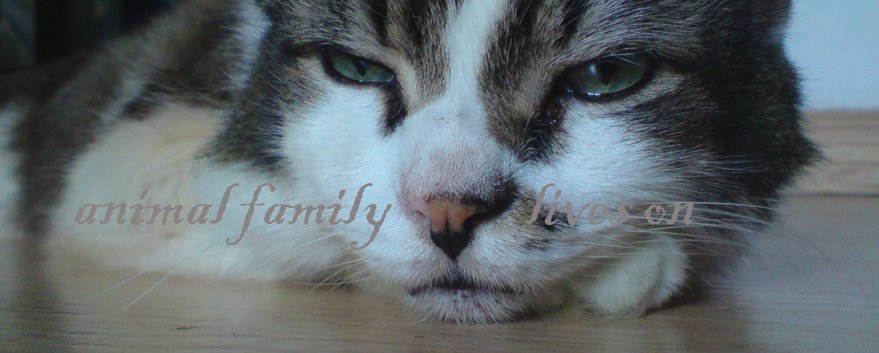Proximity to neighbours aside, it is probably also a reflection of our society that hoarders are kept from their irreversible slide from eccentricity to psychosis by their own tenuous but indissoluble family ties, and our wide-reaching government mechanisms. Their situations have hardly escalated to the kind of horror and devastation that are reported in bigger, more far-flung countries.
At least as far as we know.
Animal hoarding traits and types
Pet News Examiner Helena Sung provides an inventory of animal hoarding traits in her article What is animal hoarding? Psychological profile of a hoarder. They are used here to make a comparison of our two recent cases:

Yesterday, the Seletar Hills multi-cat home was featured in The New Paper. Are they borderline hoarders? It is hard to say without insight into their situation. But certainly the widely reported stench is worrying.
In most cases, hoarder caregivers are dealing with what the Hoarding of Animals Research Consortium identifies as an Overwhelmed Caregiver. Their self-esteem is linked to their role as caregiver. They have some awareness of their situation, have problems triggered by change in circumstances and yet are unable to resolve them effectively. This could happen to any caregiver, even the woman, and this is the category that Auntie falls under.
According to a HARC report, “the overwhelmed caregiver is more likely to respond to a softer, more therapeutically-oriented approach. S/he has greater insight that the situation is out of control, and may actually find some relief at the prospect of help and downsizing.” Also, threat of action from the authorities may be sufficient to reduce the likelihood of repeat offending.
Ah Ma is trickier. She leans towards being a Rescuer Hoarder, whose mission to rescue leads to compulsion. She takes an active rather than passive role to acquisition and believes she is the only one who can care for them. She also has an extensive network of enablers - neighbourhood people who think she is the best resort to leaving kittens and cats on the street and even compensates her with little gifts and donations for her ‘work’.
If Ah Ma’s case is anything to go by, verbal persuasion, even threat of action from authorities, is unlikely to be effective with this type of hoarder. They are paranoid and they do not take kindly to criticisms. Caregivers need to spend time and energy to gain their trust, usually by injecting large doses of flattery about their compassionate nature and tireless work.
The last type of hoarder we hope never to encounter. The Exploiter Hoarder is sociopathic, lacks empathy for people and animals, lacks guilt and remorse and has a need to control.
Local animal hoarding situation
No one has as yet looked into the local animal hoarding problem in any great detail. Perhaps there are nuances unique to our society. Certainly, we need to build up a set of tried and true intervention methods that works in this country. Currently, there are at least 5 cases (update: 7 cases) surfaced and handled by caregivers. With a growing aging population, increasing uncertainty of a globalised economy and widespread breakdown in family bonds, we can expect more cases ahead.
HARC recommends a multi-disciplinary approach that focuses the law, law enforcement, animal welfare organizations health department and social service agencies on this issue.
Right here, right now, there are just HDB by-laws, eviction letters and amateur caregivers. IMH has no answer, social services have no clue. Govt agencies have but two solutions, removal of animals or removal of said person and animals. Nothing is halting the hoarder's mental deterioration nor stopping the hoarder from repeat offending, leaving little room for preventing the suffering of the animals except with the promise of death.
A preliminary guide to hoarder intervention in Singapore
Ideally, hoarders are reconnected with their families when their situation improves. This is the case with Auntie, whose sister and niece's family have come to visit after the intervention.
In Ah Ma’s case when reconciliation is a long rocky road, the burden on the befriending caregiver is a big one. As these hoarders largely fall into the elderly or needy boxes or both, it is not unreasonable to expect involvement by befrienders, social workers, psychologists and counselors to reach a shared commitment to this problem. Yet none has been forthcoming.
Until they are, we need more Jaimes and Janets in Singapore. If you think you can fit into one of the roles below, please come stand with the giants and bring hope to these lonely suffering lives, on two legs and on four.





4 comments:
We just found your blog. The humans says it's very interesting and we can't believe that some cats live under such condition. Good job telling the world about this!
When the health of the hoarder is affected, as it most definitely would be, with regard to the physical hygiene and also the mental state of mind, this constitutes elder-abuse if the hoarder is an elderly person. The volunteers can approach
http://www.transcentre.org.sg/
for help.
I think these professionals were called to help in the hoarding case in Toa Payoh.
This will be part of a multi-disciplinary approach to this social problem.
is this Jaime's TP case? if so, we haven't seen anyone from Trans Centre come down. but i will give them a call to see if they will.
there is a new blog Animal Hoarding News & Info at
http://animalhoarding.tumblr.com
most recent animal hoarding news, legislation, books, etc.
Post a Comment